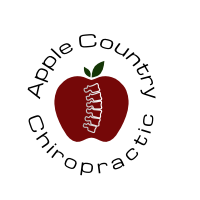The Role of Insurance Coverage in the Williamson Back Surgery or Non-Surgical Care Choice
“Back surgery is one of the most overused types of surgery as well as the most common ailment that sends patients to doctors, chiropractors, and physical therapists,” conveys Crain’s Detroit Business magazine’s article titled Health Insurers Look for Ways to Cut Costs with Back Surgery. What a way to start an article! It continues:
- $90 billion on low back pain alone annually
- 1.2 million spinal surgeries a year
- $60,000 to $110,000 per lumbar fusion surgery (the fastest-growing type of surgery in the past 10 years)
The back surgery failure rate, the so-called “failed back syndrome” or the more “politically correct” term “post-surgical continued pain syndrome,” is as high as 50%. (1) With healthcare spending in the US over $3.5 trillion - $10,739 per person – it’s no wonder that insurers look for another way to cut costs, particularly when one-third of the money goes to hospital care of chronic illnesses. (2) Apple Country Chiropractic is well-trained and knowledgeable in offering non-hospital-based care to help Williamson back pain – chronic and acute – patients find relief of and handle their back pain – as well as post-surgical continued back pain - without surgery.
LOW BACK PAIN FACTS
Low back pain is the foremost cause of years lived with disability globally. Today, guidelines for low back pain relief care discourage pain medications, steroid injections and spine surgery and encourage physical therapy and psychological therapy. Healthcare systems have a tendency to struggle with these new approaches. Why? Pharmaceutical companies’ financial interests, old payment systems that favor medical care, outdated traditions, and legal, personal, political, and societal beliefs of us all. These notions are shared in the Bulletin of the World Health Organization, believe it or not. (3) Apple Country Chiropractic reads this with interest.
BACK SURGERY CHOICE
Considering these facts, it is not hard to believe that some back pain sufferers will pick back surgery over non-surgical care of their back pain. “Patients go where insurance pays, even if it is surgery.” In one study, back pain sufferers chose to visit a primary care physician (PCP) or physical therapist (PT) or chiropractor first based on their health plan type, co-payment, and deductible. Changing these factors to make them more valuable/less expensive/less restrictive as to provider type might well inspire low back pain sufferers to choose non-hospital, conservative treatment instead of back surgery. (4) Apple Country Chiropractic is all for this! Less than 1% of back pain sufferers must have back surgery. (5) Apple Country Chiropractic is ready to assist the other 99% of the Williamson back pain sufferers cope with their back pain and adapt their lifestyles to live with the spine they have and deal with its episodes of pain and relief.
RECURRENT BACK PAIN
Williamson back pain sufferers are not alone if their back pain comes back. It happens. It is controllable. It’s manageable. Some data first: Within a year of recovery, 69% of patients experienced another episode of back pain of some sort. What risks trigger a recurrence of back pain? Awkward postures, long sitting times, and more than 2 prior back pain experiences. (6) It is ok though. Truly! Apple Country Chiropractic helps Williamson back pain patients find their way through these recurrences and manage them so they do not limit anyone’s enjoyment of life. We have a treatment plan!
CONTACT Apple Country Chiropractic
Listen to Dr. Kimble Cater on The Back Doctors Podcast with Dr. Michael Johnson share how he helped an expectant mother with her repeated episodes of back pain. Whether you’re pregnant or not, Williamson chiropractic care at Apple Country Chiropractic can help you deal with repeated episodes of back pain, too.
Schedule a Williamson chiropractic appointment at Apple Country Chiropractic for back pain relief. Our care is not overused! The gentle, effective, evidence-based system of Cox® Technic look for 50% relief within 4-6 weeks of care and often delivers 70%, 80%, 90% and more for many of our patients at less cost – in terms of finances and lifestyle – than back surgery.

